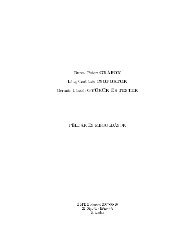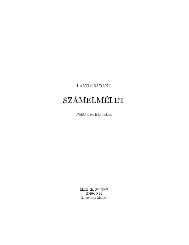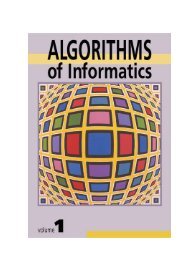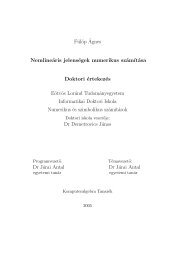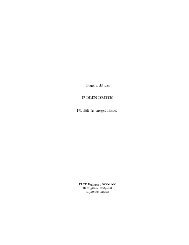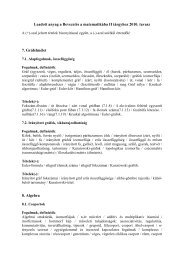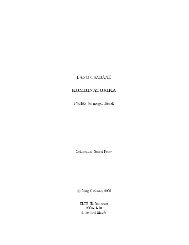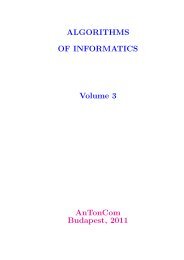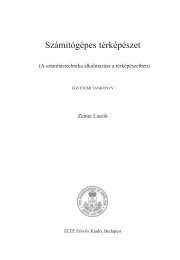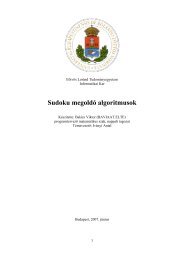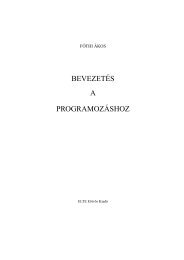On Erd˝os-Gallai and Havel-Hakimi algorithms
On Erd˝os-Gallai and Havel-Hakimi algorithms
On Erd˝os-Gallai and Havel-Hakimi algorithms
Create successful ePaper yourself
Turn your PDF publications into a flip-book with our unique Google optimized e-Paper software.
16 A. Iványi, L. Lucz, T. F. Móri, P. Sótér<br />
where<br />
r = max<br />
1≤k≤n (k | k(k − 1) < Hk) (15)<br />
Proof. If i(i − 1) ≥ Hi, then the left side of (2) is nonpositive, therefore the<br />
inequality holds, so the checking of the inequality is nonnecessary. <br />
The algorithm based on this assertion is called Erdős-<strong>Gallai</strong>-Shortened.<br />
For example if the input sequence is b = (5 100 ), then Erdős-<strong>Gallai</strong> computes<br />
the right side of (2) 99 times, while Erdős-<strong>Gallai</strong>-Shortened only 6 times.<br />
5.5 Jumping Erdős-<strong>Gallai</strong> algorithm<br />
Contracting the repeated elements a regular sequence (b1, . . . , bn) can be writ-<br />
ten in the form (b e1<br />
i1<br />
, . . . , beq<br />
iq ), where bi1 < · · · < biq , e1, . . . , eq ≥ 1 <strong>and</strong><br />
e1 + · · · + eq = n. Let gj = e1 + · · · + ej (j = 1, . . . , q).<br />
The element bi is called the checking points of the sequence b, if i = n or<br />
1 ≤ i ≤ n − 1 és bi > bi+1. Then the checking points are bg1 , . . . , bgq.<br />
Theorem 7 (Tripathi, Vijay [84]) An n-regular sequence b = (b1, . . . , bn) is<br />
n-graphical if <strong>and</strong> only if<br />
Hn even (16)<br />
<strong>and</strong><br />
Hgi − gi(gi − 1) ≤<br />
n<br />
k=gi+1<br />
min(i, bk) (i = 1, . . . , q). (17)<br />
Proof. See [84]. <br />
Later in algorithm Erdős-<strong>Gallai</strong>-Enumerating we will exploit, that in<br />
the inequality (17) gq is always n, therefore it is enough to check the inequality<br />
only up to i = q − 1.<br />
The next program implements a quick version of Erdős-<strong>Gallai</strong> algorithm,<br />
exploiting Corollary 5, Lemma 6 <strong>and</strong> Lemma 7. In this paper we use the<br />
pseudocode style proposed in [17].<br />
Input. n: number of vertices (n ≥ 1);<br />
b = (b1, . . . , bn): an n-even sequence.<br />
Output. L: logical variable (L = False signalizes, that, b is not graphical,<br />
while L = True shows, that b is graphical).<br />
Working variables. i <strong>and</strong> j: cycle variables;<br />
H = (H0, H1, . . . , Hn): Hi is the sum of the first i elements of b;



